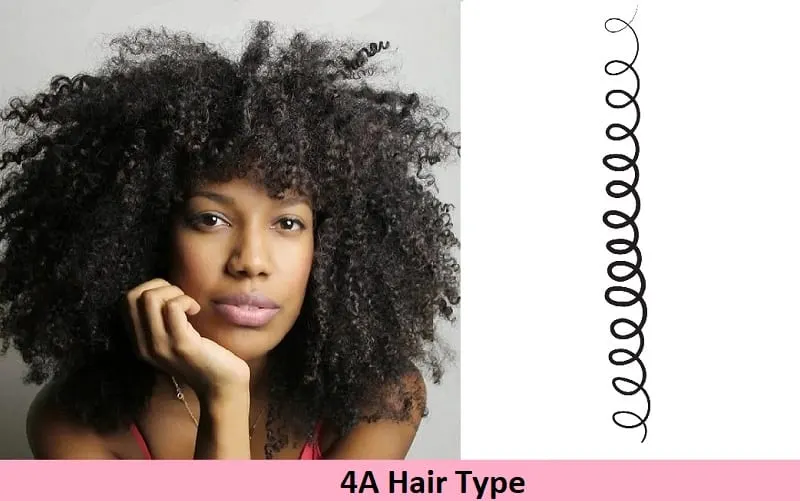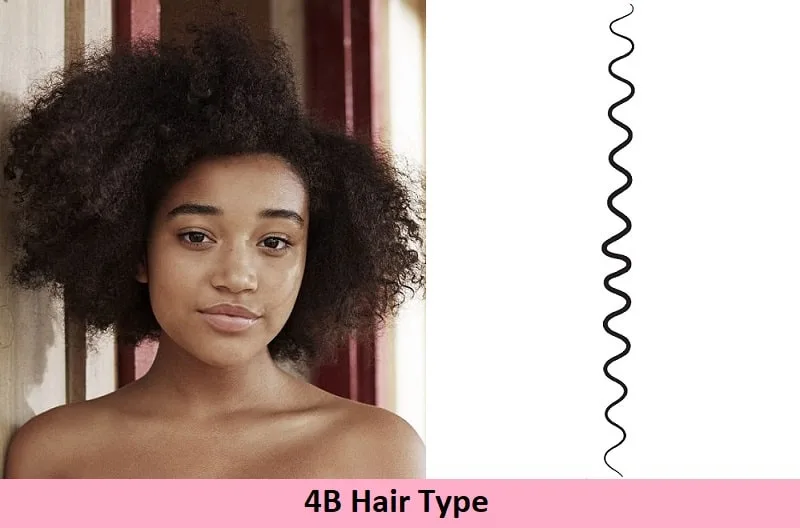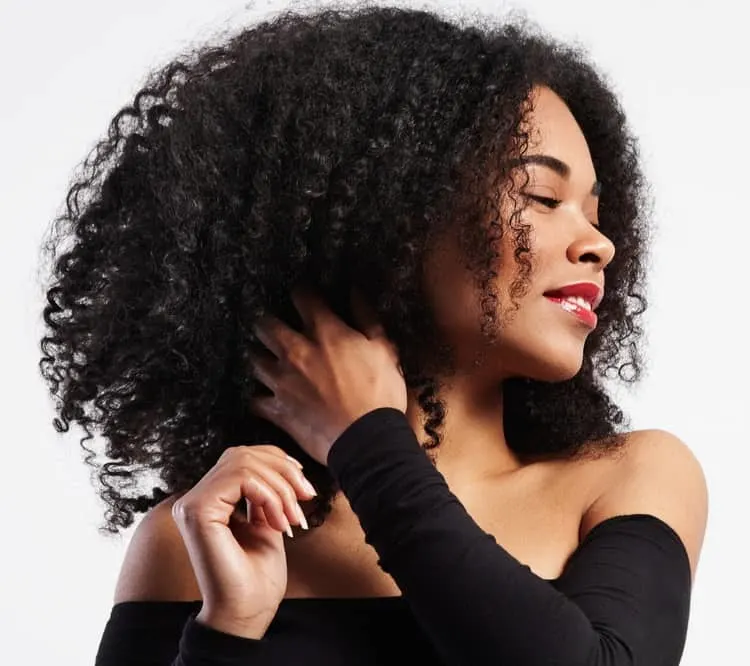If you peruse the Internet for ways to style your naturally curly, coiled hair, you’ve probably run across the term “Type 4 hair”. You may have also heard phrases like 4A hair, 4B hair, and 4C hair.
Are you wondering what those terms mean and how they came about in the first place? More importantly, do you want to know what Type 4 hair you have? Keep reading.
How to Determine Your Hair Type

If you aren’t sure whether your hair falls into the curly or coily category, the best way to figure it out is by shampooing and conditioning it as usual. Let it air dry naturally after patting it with paper towels to absorb excess water, and don’t use any gels, mousses, or other styling products. Once your hair is dry, you can compare it to the chart.
Understanding precisely where your hair falls within the 4A, 4B, and 4C range can make the difference between having healthy, shiny hair that grows quickly and stays manageable versus having dry and damaged hair that breaks easily and appears dull and opaque.
A Definitive Guide to 4A, 4B, and 4C Hair Types

Type 4 hair has a curl pattern that is typically considered to be afro-textured. Because there are so many possible genetic combinations stemming from mixed-race relationships throughout history, it’s common for a person to have more than one Type 4 curl pattern.
That’s why, for example, the hair textures at the top of your head might be slightly different from those growing in the back. It’s challenging to strictly define the three subtypes of Type 4 hair into the A, B, and C categories, but we’ll try.
Type 4A Hair – What it Means

4A-type hair has S-shaped coils with a strong curl definition. The ringlets are stretchy and easily spiral around a pen or pencil. Type 4A hair can be fine and wiry or thick and more densely packed.
4A hair is soft to the touch, and even though it tends to be dry like most Type-4 hair, it retains moisture better than 4B and 4C hair. 4A hair is usually easy to style, especially when using the right products.
Type 4B Hair – What it Means

It’s sometimes difficult to differentiate 4B hair from 4A or 4C hair because it has the characteristics of both. 4B-type hair has a cotton-like texture that feels wiry, and its Z-shaped coils are tighter than 4A hair.
The zig-zag pattern of the 4B coils is hard to see, so the curls are less defined than in 4A hair. Because 4B hair is dryer than 4A, it breaks and tangles more easily. 4B hair is also more prone to shrinkage, usually 70-75%, which is why it tends to be difficult to grow out.
Type 4C Hair – What it Means

4C-type hair is very tightly coiled and spongy, like a picked-out afro. Its super-low porosity level means its puffy strands are naturally dry. The hair strands are kinky, coarse, and wiry, with no defined curl pattern.
Water tends to roll right off 4C hair, so it’s challenging to keep it moisturized when shampooing and conditioning. 4C hair can shrink up to 75%, depending on the weather.
How to Take Care of Type-4 Hair
4C-hair is often extremely dry and brittle, and as such, requires constant care and extra attention. Because it’s already so dry, you should make every effort to keep it as hydrated as possible.
Washing 4A, 4B, and 4C Hair
Avoid washing your hair with shampoo every day, but use a sulfate-free shampoo and a moisturizing conditioner when you do. (If you have 4A hair, you can occasionally use a shampoo with sulfate shampoo for extra cleaning.) Co-washing products (shampoos mixed with conditioners) are also ideal for Type-4 hair.
Tools for 4A, 4B, and 4C Hair

Since Type-4 hair is so delicate, it’s best to use only wide-toothed combs and hair picks; never use a brush. Detanglers should also be part of your beauty arsenal to protect your hair from breaking while you comb it.
Whenever possible, air-dry your hair and avoid using towels as they can make your hair frizzier. Instead, squeeze and pat it dry with paper towels or a discarded t-shirt.
Styling 4A, 4B, and 4C Hair
Don’t use blow dryers or any other heated styling tools which can dry out and damage your hair even more. If you decide to use chemical straighteners, understand that you’ll eventually have to cut your hair to remove the damaged ends.
To keep 4B or 4C hair looking great in its natural state, use protective braiding styles, scarves, and even wigs, and always sleep with a satin cap or a satin pillowcase.
Conditioning 4A, 4B, and 4C Hair

Moisture, moisture, moisture: that’s the key to selecting deep conditioners and hydrating masks. Choose rich formulas that include natural butter and oils. Use lightweight leave-in conditioners to reduce frizz and to keep your coils and curls as soft and hydrated as possible.
Taking good care of your natural 4A, 4B, or 4C hair can be time-consuming and complicated, but once you understand the difference between the three subtypes of Type-4 hair, you’ll be able to determine which curl pattern most closely fits your hair.
It will be much easier for you to figure out which products to use and how to manage and style your hair when you’re armed with that information. Whether your hair is 4A, 4B, or 4C, you can enjoy it and wear it with pride when it’s in the best condition possible!
